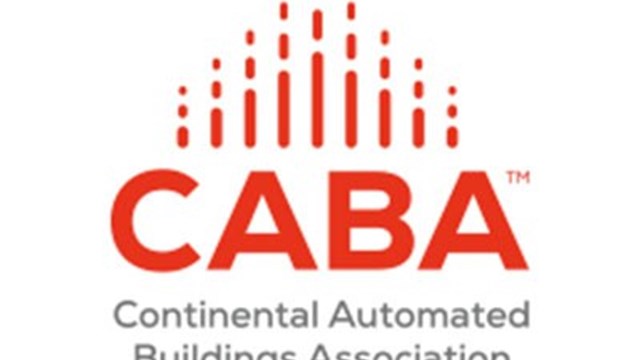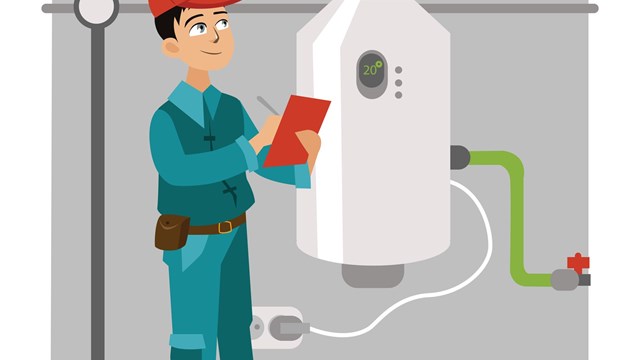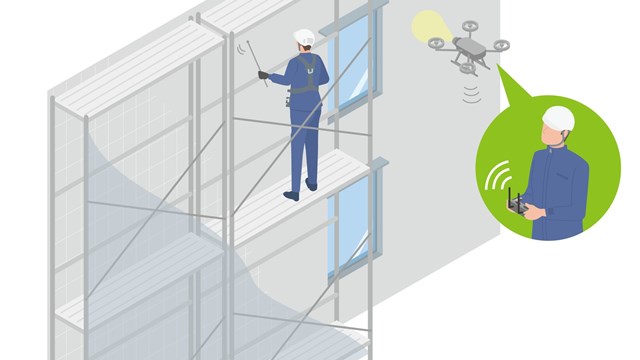
Board members and association managers have a lot on their plates—maintenance issues, resident complaints, construction projects, and the hundred little tasks that make up the administration and upkeep of a multifamily residential building or development. With all that going on, it's easy to forget or overlook issues that may not necessarily be visible to the naked eye. Something like indoor air quality often doesn't register as a priority until it becomes a problem, and even then it can be tough to pinpoint the root of the issue.
Sick Buildings?
About two decades ago, the term “sick building syndrome” seemed to pop up regularly in news headlines to describe a situation in which a building's ventilation system was compromised, leading to health or comfort issues for its occupants. Since then, the term has fallen out of favor, according to indoor environmental professionals.
“Sick building syndrome is an old term,” says Gil Cormier, principal consultant for Occupational Risk Control Services, Inc., an indoor air quality investigation service in New Britain, Connecticut. “No one really uses it anymore, especially when you are talking about residential buildings. Now, what you hear is the term ‘Building Related Illness' or BRI, which is something that we can go in and identify.”
Harvey Klein of Garden State Laboratories in Hillside agrees. "Sick building syndrome is not a scientific term. Some buildings do have air or water problems, but 'sick building syndrome' is not a term that we would use in our environmental testing.”
With a building-related illness, the symptoms are more tied to the building itself, says Cormier. General assessments are made to discover what the causes are for any symptoms people are experiencing. “Our focus is on what the source is, and whether it's a chemical or biological contaminate,” he says. “If it’s something that is a one-time thing, we are not as concerned, if we can find out what it is and it’s not repeated.”
Any building has the potential to become “sick,”says Klein. “For example, if you have a leak in a water line and that moistens a wall, you have a moist, warm environment that certainly can get micro-organisms growing. That could happen in any type of building.”
According to Tom Yacobellis, vice president of corporate and technical operations of DUCTZ International, based in Ann Arbor, Michigan, with several locations in New Jersey, “The actual building itself is not essentially sick. Really, the single largest thing that creates this phenomenon called sick building syndrome is the accumulation of moisture in inappropriate areas. Or you could have problems arise from someone using a storage closet for chemical usage. You could have a fresh air intake for a duct system next to a diesel generator. There are other reasons as well of course, but in general, the most common one is the biological.”
Causes & Possible Effects
As any building manager knows, people like to complain, and that is the best way (other than an inspection) to find out about an air quality issue. If people are complaining about excessive coughing, wheezing, throat and eye irritations, skin irritation, nausea, headaches and fatigue or upper respiratory conditions, this could be a sign that the air quality in their home is not good. All of these symptoms can be the result of poorly ventilated areas, strong odor throughout the building, mold/bacterial spores and viruses. A myriad of health issues are thought to stem from stale, dusty or mold-contaminated air. Cormier says the first step in fixing any contaminate issue is to identify the source of any problem.
“A lot of times we will get calls from condo owners and get some info on the phone and based upon the symptoms, frequency and severity, we can do an assessment of the problem,” he says. “We’ll ask if there are allergy-type symptoms, if they had water leaks, plumbing or roof leaks—and this helps to guide us.”
There are four things that Cormier looks to discover in any discussion.
“There has to be some sort of contaminant; it could be chemical or biological. Second, there has to be a mechanism of dispersion that makes it become airborne,” he explains. Third, there needs to be a pathway and fourth, it has to be sensitive to people.”
He cites an example of someone spray painting on the fifth floor. “If the odor is noticed on the second floor, it has migrated, so there is a pathway,” he says.
High moisture content, bird feces, indoor and outdoor effluents can all contaminate the air conditions within the building. Most often however, the issue arises from one culprit: water. Mold, bacteria spores, pollen and viruses may be harbored by standing water within the system from condensation leaks or inadequate general maintenance.
“I would say that 60 to 70 percent of condo problems are moisture related, and it could be tied in with poor ventilation, Cormier says, “With moisture, you have to stop the water, that’s key. A leaky toilet or overflow of plumbing pipe or roof leak can cause moisture and mold and bacteria issues. If there are any water leaks, what we tell co-op and condo owners is to find the source of moisture,” he says. “If you eliminate the moisture you will eliminate most of the biological.”
According to Richard M. Lester, president of Garden State Environmental, Inc. in Glen Rock, “Water intrusion and mold is a big thing, but there are probably half a dozen or so common indoor air quality problems in buildings that we see on a somewhat-regular basis. A lot of the indoor air complaints...are related to ventilation issues. Then there are specific exposures to various chemical, physical and biological agents. Chemical agents could be things like carbon monoxide, or formaldehyde from formaldehyde-containing materials. It could also be physical factors; we once did an investigation in a municipal building where they had a sprayed mineral silicate to insulate steel beams, and it created irritation when the material became airborne. It could be asbestos. It could be lead paint. It could be radon. These are all things that could affect the interior of buildings.
Residents can experience health problems based on the poor quality of the air they are breathing. This air may contain contaminants due to improper airflow from an HVAC system or strong roof fan blowers for the air exchange. That’s why it’s imperative that any issues be looked at, and why many co-op and condo buildings are formulating and implementing maintenance plans that include regular inspections of their HVAC system, as well as periodic duct cleanings to keep allergens and irritants to a minimum.
Many issues arise from poor building design and/or inconsistent maintenance, resulting in inadequate ventilation in the building. “Any building can have issues,” Cormier notes. “We have found problems with many buildings in the designs. We are seeing building systems fail and we can predict that on buildings not even built yet.”
Perhaps ironically, buildings most susceptible to indoor environmental problems tend to be newer buildings. The push to save energy has led to the construction of nearly air-tight buildings, sometimes with windows that don't even open. As a result, the only ventilation sources in the building are the installed heating and cooling systems. If those systems are contaminated or poorly maintained, it's easy to see how those problems could translate to resident complaints. Cormier adds that a lot of newer construction is using wood composite materials with a lot of reins and glues in them, which can also contribute to problems.
Air Care
In this decade, the movement toward more environmentally healthy, “green” products and practices has given a big boost to peoples' awareness of unhealthy indoor environments and how to prevent them. Products and materials that are better for the environment at large are usually better for people too—and many residential buildings are taking steps to make their interior environments healthier.
That being said, the books are scant when it comes to government regulation of indoor air quality—at least in residential buildings. “In general,” says Lester, “the field of indoor air quality is unregulated. There is a state regulation in New Jersey governing public office buildings, but there's no such regulation for individual homes or condominiums, and there are no grant programs that I'm aware of that would provide any relief to those types of settings.”
So, absent visits from a trained public inspector, HOAs may opt to bring in a professional indoor environmental consultant to inspect their building or property. It’s recommended that all work be completed by a member of National Air Duct Cleaners Association (NADCA) with Certified Air Systems Cleaning Specialists (ASCS) on staff.
First off, says Lester, “When you get there, the first thing you do is sit down and talk to the stakeholders to get a sense of what is it that they're really complaining of. So a good interview is the first step.”
Next, says Yacobellis, the consultant examines the overall condition of the building. “They look at the age of the building, the construction type, the mechanical systems, their rating, and whether they were appropriately sized for the building, the actual science of the construction, where the vapor barriers are, and even what area of the country the building is located in.” Factors in Chicago or New York are quite different from those in Florida, and so forth, so “they all come into play to determine how that building is going to live and breathe.”
Once the preliminary examination is complete, the inspecting consultant starts testing for unknowns, Yacobellis continues. “They start testing for things like carbon dioxide, fungal contamination. Samples can determine the quality of the air they're breathing. Temperature, relative humidity, operational conditions, overall particulate in the environment, plants or other fungal contaminants. One of the big ones that a lot of people miss is rodent and insect droppings that are in hidden spaces, which is pretty disgusting actually.”
Any type of analytical work should be done by a qualified professional, adds Klein. “We have devices to take air samples for micro-organisms. We actually do an analysis per cubic foot or cubic meter of air. It's not simple. For example, whenever we get involved, we take a minimum of five samples. We take an air sample in the area of concern. We take another air sample in an area different than, but similar to, the area of concern. For example, maybe you have a concern in a bedroom. We would take one sample in the bedroom, then we would take another sample in another bedroom. Then we'd take a third sample in an area different than the area of concern, preferably in the same building, but a different type of area. Then we take an outside air sample because it is important to compare the inside air versus the outside air. And then, of course, there's a sterility control. So, that's a minimum of five samples.”
Industry professionals point out that it's important to recognize that analytical results can vary significantly based on a wide array of factors. An outdoor air sample taken in high summer might contain a high microbial count, whereas if it's just rained, the numbers could be much lower. “It becomes relative,” says Klein.
Paying Attention
What sort of inspection schedule should a building or HOA operate on to keep its vents and ducts clean and other parts of the building free of mold and other allergens, and what can association staff do in the meantime to keep their indoor air clean?
Klein puts it this way. “Most buildings do not need to have their air tested on a regular basis,” he says. “Air testing is not legally required. I just changed the filters in my air conditioning at my home, for example. One of them was very clean; one of them was very dirty. And, of course, when you read the labels on the air conditioning filters, they say, 'Replace every 30 days.' Well, I don't replace mine every 30 days and I'm sure most other people don't either. One filter, I probably could have gone significantly longer before cleaning; the other, I probably should have replaced some time ago. So, it always pays to check your filters and replace them when they need it.”
In today's environment, says Lester, people are very educated, and they can easily go online and learn to recognize possible problems. That being said, he does not personally recommend that homeowners purchase air quality self-testing kits that purport to measure mold or other contaminant levels.
“They're very unreliable and they really can give false-positives or false-negatives, so it's not a good tool,” he says. “There aren't too many good tools available for homeowner to use, but there are a few exceptions. Today, a lot of people have carbon monoxide detectors, for instance, that's a good thing.”
Air testing may not be mandated by law, and it may be tough to get fired up about something nobody can see, but it's still a good idea for HOA boards and management to have their indoor environmental safety on the radar.
“It certainly is more in a board's best interest to try to prevent stuff from happening than to try to make sense of it after it's occurred,” says Yacobellis. “And a lot cheaper in the long run.”
Keith Loria is a freelance writer and a frequent contributor to The New Jersey Cooperator. Additional reporting by David Chiu.






Leave a Comment